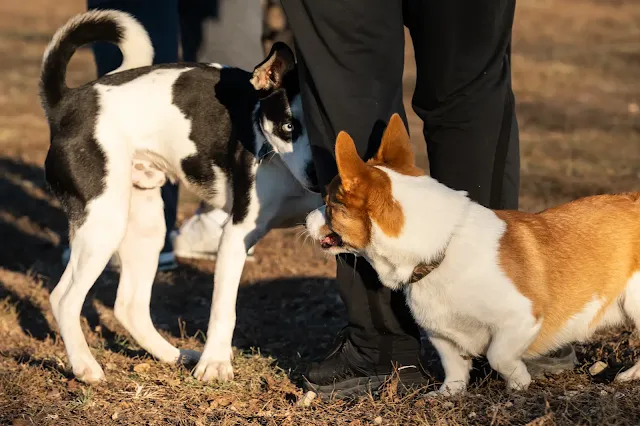Tips for a Stress-Free Socialization
- If you're a pet owner, dealing with a possessive dog can be a stressful situation.
- It can make socializing with other dogs challenging, and it can lead to fights and aggressive behavior.
- But, with patience and consistency, it is possible to train your dog to be less possessive around other dogs.
- In this article, we will provide you with some useful tips to help you deal with your possessive dog.
- Welcome to Visvon Blog, where we provide helpful tips and advice for pet owners.
- In this article, we will discuss how to stop your dog from being possessive around other dogs.
- If you want to learn more about pet care, be sure to check out our related article: 10 Mind-Blowing Facts That Will Leave You Speechless! Facts About Pets.
1. Understanding the Possessive Behavior of Your Dog
- It is crucial to understand why your dog is possessive around other dogs before addressing the behavior.
- Possessiveness in dogs is often due to fear or insecurity.
- They may be afraid of losing your attention or feel threatened by other dogs.
- This behavior can also be caused by a lack of socialization or training.
- Some signs of possessiveness include growling, snarling, snapping, and biting when other dogs approach you.
- Your dog may also become very protective of you and refuse to let other dogs come near you.
- You may also notice your dog becoming agitated or anxious when around other dogs.
- If you want to learn more about pet care, be sure to check out our related article: Taking Your Dog to the Beach: Safety Tips and Fun Activities.
2. Socializing Your Dog
- Socializing your dog is the first step in correcting possessive behavior.
- Socialization is the process of introducing your dog to other dogs and people.
- This process will help your dog become more comfortable around other dogs and reduce their possessive behavior.
- Start by taking your dog to a dog park or other public areas where there are other dogs.
- Allow your dog to interact with other dogs in a controlled and supervised environment.
- This will help your dog learn how to interact with other dogs appropriately.
- If you want to learn more about pet care, be sure to check out our related article: Keeping Your Dog Hydrated: Tips and Signs of Dehydration.
3. Correcting Possessive Behavior
- When your dog exhibits possessive behavior, you need to correct it immediately.
- This can be done by distracting your dog and redirecting their attention away from the other dog.
- You can also use positive reinforcement to reward your dog when they behave appropriately around other dogs.
- Another useful technique to help reduce possessive behavior is desensitization.
- This process involves exposing your dog to the things that trigger their possessiveness, such as other dogs.
- Start by exposing your dog to other dogs from a distance and gradually move closer as your dog becomes more comfortable.
- If you want to learn more about pet care, be sure to check out our related article: Protecting Our Furry Friends: A Guide to Parasite Prevention for Pets.
4. Enrolling Your Dog in Obedience Training Classes
- Enrolling your dog in obedience training classes can also help reduce possessive behavior.
- This will help your dog learn basic commands and improve their behavior.
- Obedience training will also help your dog become more confident and reduce their fear and anxiety.
In conclusion,
- helping your dog overcome possessiveness around other dogs requires patience, consistency, and a lot of effort.
- By socializing your dog, correcting possessive behavior immediately, and enrolling them in obedience training classes, you can help them become more confident and less anxious around other dogs.
- We hope the tips provided in this article have been useful to you and your furry friend.
- If you found this article helpful, please consider sharing it with your friends and family who are also pet owners.
- Don't forget to leave a comment below and subscribe to our blog for more informative articles on pet care and training.
- Thank you for reading! 🐶🐾
labels
Dogs




